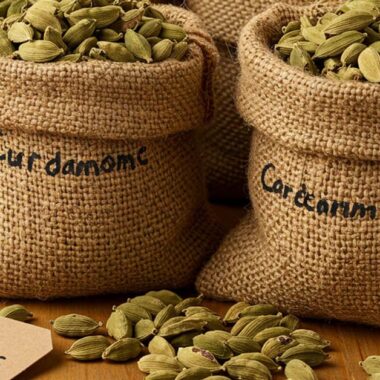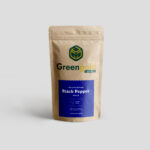Organic cardamom farming is not just about avoiding chemical pesticides and fertilizers—it’s about building healthy soil, conserving biodiversity, and using natural farming techniques to produce high-quality cardamom sustainably.
If you want to grow flavorful, organic cardamom while protecting the environment, follow these best practices!
1. Choosing the Right Variety 🌱
Selecting the right cardamom variety is crucial for organic farming. The two most common types are:
✅ Elettaria cardamomum (Green Cardamom) – The most widely cultivated variety, known for its strong aroma.
✅ Amomum cardamomum (Black Cardamom) – Larger pods with a smoky flavor, mainly used in savory dishes.
💡 Choose a variety that thrives in your region’s climate and soil type!
2. Preparing the Land 🌏
🌱 Shade Management – Cardamom grows best under 50-70% shade. Maintain shade trees like jackfruit or silver oak.
🌱 Soil Enrichment – Mix in compost, cow dung, or green manure to improve fertility.
🌱 Mulching – Apply organic mulch (leaves, dried grass) to retain moisture and prevent weeds.
3. Natural Soil Fertility Boosters 🌿💪
Organic cardamom farming relies on natural fertilizers to nourish the soil:
🌿 Vermicompost – Enriches soil with beneficial microbes.
🌿 Cow Dung & Panchagavya – Boosts plant immunity and growth.
🌿 Neem Cake & Bone Meal – Helps prevent soil-borne diseases.
🔄 Rotate crops every few years to maintain soil fertility!
4. Organic Pest & Disease Management 🐛❌
Avoid synthetic pesticides! Instead, use natural methods to keep pests away:
🐜 Neem Oil Spray – Kills pests like thrips, mites, and caterpillars.
🐞 Trichoderma Biofungicide – Protects against fungal infections like root rot.
🌿 Garlic-Chili Spray – A natural insect repellent.
🌱 Companion Planting – Grow turmeric, ginger, or marigold nearby to deter harmful insects.
5. Water Management 💧
Overwatering leads to root rot, while underwatering reduces yield. Follow these guidelines:
💧 Drip irrigation conserves water and provides consistent moisture.
💧 Mulching prevents water evaporation and keeps roots cool.
💧 Avoid waterlogging – Ensure proper drainage in the plantation.
6. Sustainable Harvesting & Post-Harvest Care 🏡🌿
🟢 Harvest cardamom pods when they turn bright green (not overripe).
🟢 Hand-pick pods carefully to prevent damage.
🟢 Sun-dry or use a drying chamber for better color and aroma retention.
🟢 Store in airtight containers to preserve freshness.
7. Getting Organic Certification ✅
To sell your cardamom as certified organic, follow these steps:
📜 Follow organic farming guidelines (no chemicals, sustainable practices).
📜 Keep records of all farming activities for transparency.
📜 Apply for organic certification from a recognized agency (like India Organic, USDA Organic).
Why Choose Organic Cardamom? 🌍💚
✅ Healthier for consumers – No harmful chemical residues.
✅ Better for the environment – Reduces pollution and soil degradation.
✅ Higher market value – Organic cardamom sells at premium prices.
🌿 Want premium-quality organic cardamom?
🛒 Shop at Greengold Guide!













